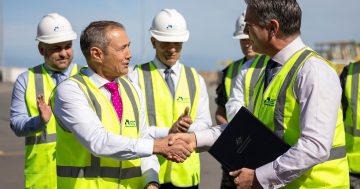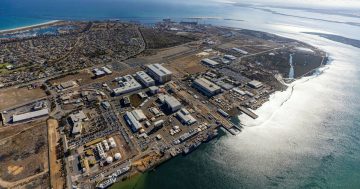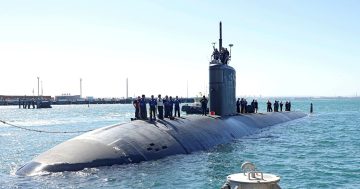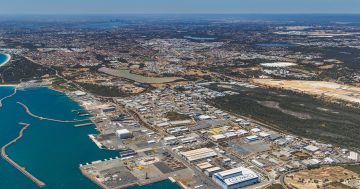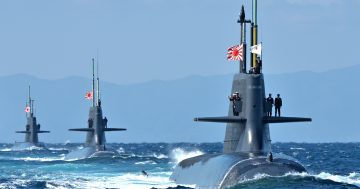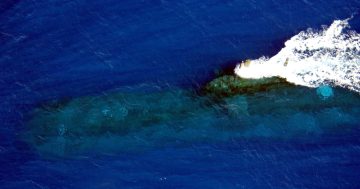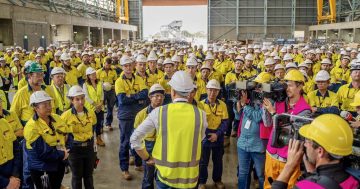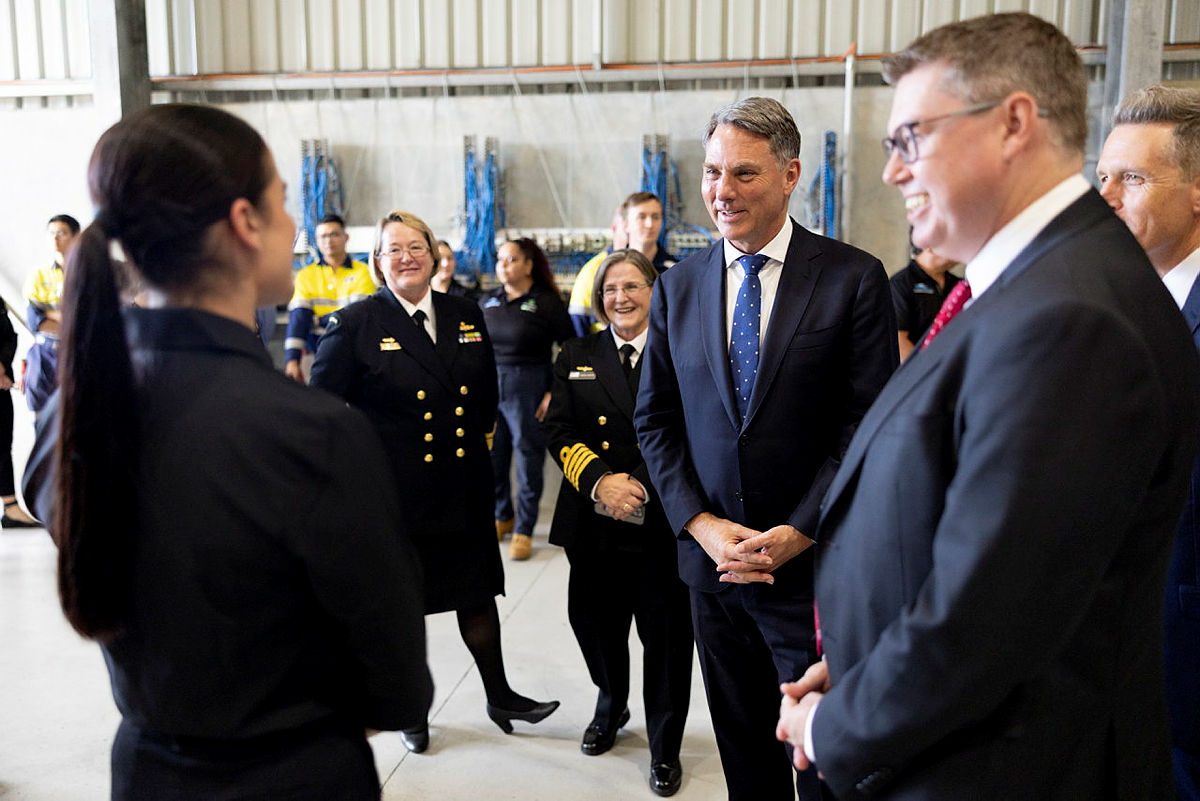
Defence Minister Richard Marles, Defence Industry Minister Pat Conroy, and Education Minister Jason Clare speak to Navy and industry personnel at Fleet Base West. Photo: ADF.
The Federal Government has revealed some early details on how its investment of $150 million will be spent as it starts to build a workforce capable of supporting Australian and allied nuclear-powered submarines in the future.
Speaking at Fleet Base West near Fremantle last week, Deputy Prime Minister Richard Marles and Education Minister Jason Clare said $128.5 million would be invested to fund 4000 university places. The Department of Education would also support the nuclear-powered submarine program through international engagement advice and research.
They said funding would start later this year, enabling the ramping up and development of STEM disciplines including physics, chemistry, mathematics, materials science, naval architecture, computer science, and mechanical, electrical, chemical and nuclear engineering.
The 4000 places will include 800 at South Australian universities in the Cooperation Agreement between the Commonwealth and South Australia announced in March.
A further $3.9 million will be provided over two years to establish the skills taskforce within the Department of Employment and Workplace Relations, while $11.4 million will be provided over three years to extend the Defence Industry Pathways Program within the Western Australian shipbuilding sector.
The government said the nuclear-powered submarine program would be the “most transformative industrial endeavour in our history”, and that it was vital we develop a pipeline of “highly skilled STEM graduates and a talented skilled workforce” to build the necessary industry capabilities.
“We need to start investing in those skills now – this is a project which starts this year and will span decades with enormous opportunities,” Mr Marles said in a statement.
Minister Clare added: “These extra 4000 places are in addition to the existing 20,000 more Commonwealth Supported Places already funded by the Australian Government to address skills shortages in areas of national priority.
“This funding commitment will ensure more Australians have the opportunity to go to uni and develop the advanced technical skills needed to work on these nation-changing projects,” he said.
In a 17 May statement, the Australian Industry Defence Network – an organisation that represents small to medium enterprises – said, while its is pleased the government is working to secure skills and 20,000 jobs and that it recognises that defence industry workers are a fundamental input to capability, “the Government’s immediate plans to secure the jobs of the 60,000 middle Australians currently in the defence industry remain unclear”.
“AIDN and our membership is optimally positioned to support the Albanese Government and the unions with the delivery of the Defence Strategy Review’s (DSR) urgent capability requirements, but with the delivery of the DSR almost four weeks ago, and no further clarity in last week’s Federal Budget, Australian Defence Industry SME’s are still waiting for the Albanese Government to clearly define what their role will be,” the statement said.
“97 per cent of all Australian businesses are small businesses, which employ over 4.7 million people, making them Australia’s biggest employers,”. The Australian Defence Industry employs approximately 60,000 Australians. Australian SMEs are the backbone of the Australian economy and AIDN does not believe investment in further APS jobs constitutes investment in the Australian Defence Industry.”
AIDN CEO Brent Clark said, “As highlighted at our Inaugural AIDN Policy Symposium and Parliamentary Sovereign Showcase in November last year, AIDN’s membership spans almost every federal electorate across Australia. Every one of our members vote.
“Over the coming months, our membership will be engaging with their local MPs and Senators to secure the role of the Australian Defence Industry in maintaining and sustaining sovereign capability for our warfighters.”
Original Article published by Andrew McLaughlin on Riotact.


